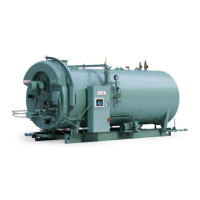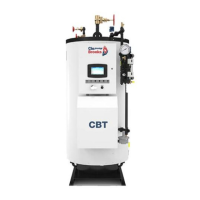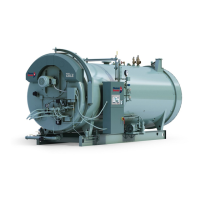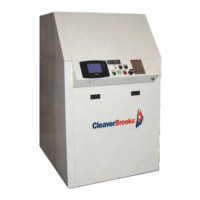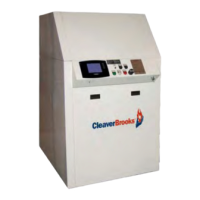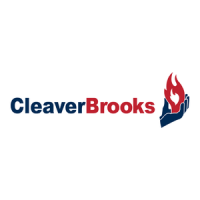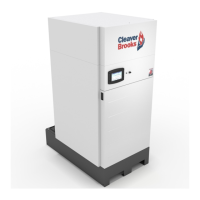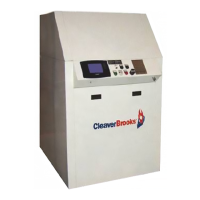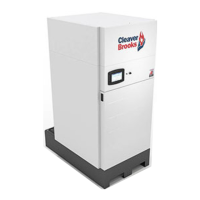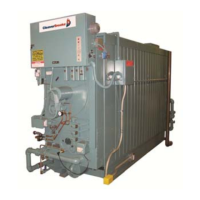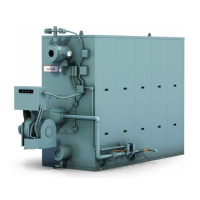Startup and Operation
4-10
750-392
CBEX-DE
A vacuum (or a compound pressure-vacuum) gauge should be installed at the suction port of the pump and its
reading observed and recorded for future guidance. If a vacuum condition exists, the reading will reveal the tight-
ness of the system. It is advisable to maintain the vacuum reading at less than 10” Hg. A vacuum in excess off
10” Hg may allow oil to vaporize, causing cavitation, loss of prime, and an unstable firing condition.
Oil supply pressure is regulated by adjusting the pressure relief
valve at the oil terminal block. A pressure gauge should be
installed in the terminal block and the relief valve adjusted to obtain
a minimum reading of 75 psi when the burner is firing at maximum
rate.
Adjustment may also be required to the regulator on the fuel oil
controller. The pressure regulating valve is equipped with tubing
that directs and adds atomizing air pressure to the adjustable spring
pressure. Since the air pump is not running at this time, only tenta-
tive adjustment can be made. Without the air supply, adjust the fuel
oil pressure regulator so that the oil burner gauge registers approxi-
mately 35 psi.
The pressure gauge will indicate a higher reading when air is pres-
ent and the flame exists and will increase as the firing rate
increases. After the burner is firing and when the air pump is run-
ning, final adjustment can be made at the fuel oil controller.
FIGURE 4-5. Fuel Oil Actuator
FIGURE 4-4. Oil Terminal Block
RELIEF VALVE
PRESSURE GAUGEPRESSURE GAUGE
OIL FILTER
